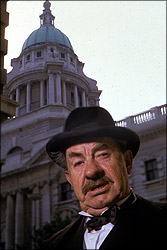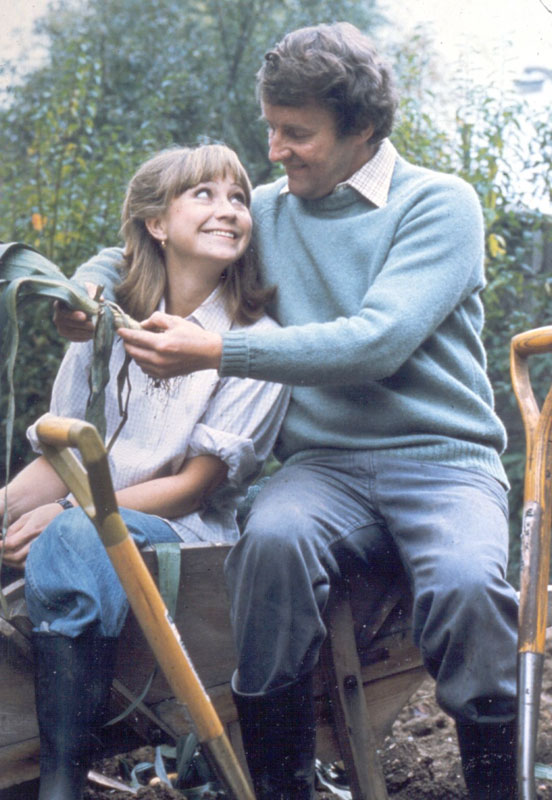The Stalking Moon
 When I was a kid, whenever I would turn on the TV and see that spinning logo of ITC, with its familiar tune ("ba da ba da, baaaa!"), I became excited. The ITC logo heralded something cool on the syndicated airwaves. The Saint, perhaps, or Space: 1999. Or The Muppet Show. Little did I know at that time just how many memorable shows ITC was responsible for. ITC (or the International Television Corporation) was a powerhouse British production company run by Sir Lew Grade. Even a partial list of their programs, produced over a 25 year span starting in 1955, is truly incredible. Besides the above-three shows, ITC also brought to our screens Danger Man (or Secret Agent, as it was known in the States), The Prisoner, The Adventures of Robin Hood, Ivanhoe, Thunderbirds, Stingray, Captain Scarlet and the Mysterons, UFO, The Champions, Department S, Jason King, Randall & Hopkirk (Deceased), The Persuaders, The Baron, Sapphire and Steel, Gideon’s Way, Hammer House of Horror and even the miniseries Jesus of Nazareth. This is by no means a complete list.  A number of the above shows have become icons of cult TV, and are still famous today. Less well-known, but easily ranking with the absolute cream of the ITC crop, is Man In A Suitcase. Like many other ITC shows designed to appeal to the U.S. market, Man In A Suitcase (MIAS) featured an American actor in the main role. Texas-born Richard Bradford played McGill (no first name given), a tall, tightly-coiled ball of barely suppressed fury who stands out a mile in the more genteel surroundings of swinging 60s London. Kicked out of the CIA and (falsely) branded a traitor, McGill rents out his finely-honed skills for the best price available, taking on all manner of assignments, from bodyguard duty to hostage negotiation to more standard private investigation work. Despite his seedy reputation and surly manner, McGill actually has a strong code of honor. He won’t work for just anyone, but when he does take a job, he sees it through to the (frequently messy) end. And he’s not above changing sides if his client turns out to be a lying, cheating scumbag. He’s really a highly moral character, clinging to his tarnished dignity in a dishonorable profession. And woe betide those who cross him... The series only ran for 30 episodes (not unusual for an ITC show), and nearly every one of them is gold. "The Sitting Pigeon," (episode 2, originally aired Oct. 4, 1967) is a typical MIAS episode, and amply demonstrates the series’ qualities.  George Sewell as Rufus Blake. George Sewell as Rufus Blake. McGill is strong-armed by Scotland Yard Inspector Franklin (James Grout) to protect Rufus Blake (George Sewell), the youngest brother of a crime syndicate family (reminiscent of the Kray brothers, a notorious real-life gangster family). Rufus talks big but is actually a weak-willed, useless member of the gang. He’s agreed to give evidence against his older brothers at their trial, hoping to get at their money while they rot in prison. Blake has refused police protection, which is where McGill comes in. He has to keep Blake alive for 24 hours until the trial, despite the best efforts of the brothers’ crooked defense lawyer, Rudyard (Robin Bailey), who has his thugs combing the streets to find Blake and make sure he doesn’t make it to court. McGill takes an immediate dislike to the boorish Rufus, and is incensed at being essentially blackmailed by the police into taking on the case.  McGill: No! I told you before. It’s not my kind of work. Sergeant: It’s well paid. McGill: Yeah? And where’s the money come from? Protection, rackets, people getting razored... Sergeant: Just think of these people as taxpayers and yourself as a public servant. McGill: No! Get your own public servant. You saw what he’s like. He’s just a...cheap, gutless...pigeon. But, as usual, once McGill agrees to deliver Rufus safely into their hands, he’ll do whatever it takes to come through on his promise...even if it means bitch-slapping the uncooperative Rufus into following his advice. Used to living the easy life of daily massages, posh hotel lunches and spending pots of cash wherever and whenever he sees fit, Rufus is not amused by McGill’s plan to lay low and avoid his usual hangouts. You’d think, after nearly being killed several times after ignoring McGill’s advice, he’d eventually tow the line, but no, he remains a pain in the neck to the end.  In the finale, McGill and his pigeon are holed up in an arboretum overnight. But Rudyard has spies everywhere (including a park hot dog vendor), and the hitman from up north is soon roaming the grounds. Rufus can’t resist lighting up a cigarette, alerting the hitman to his presence. As Rufus grovels and squeals for mercy, McGill clocks him and covers him with a coat to keep him hidden. But doofus Rufus wakes up, thrashes around and starts mewling for his big brothers. The hitman prepares to shoot, but McGill gets there first and takes him out with a vicious pounding. Rufus scrambles for the hitman’s gun and points it at McGill, shouting, "Nobody lays hands on me. My brothers’ll kill you. I’ll kill you!!" McGill moves menacingly towards him, and Rufus cowers, lowering the pistol. McGill rips the gun from Rufus’ hand and shoves him towards the door. "Gutless punk!!" . Next morning, Inspector Franklin sidles up to McGill outside the courthouse. The Blake brothers have been sent up for life, but it’s clear that old Rufus ain’t long for this world. McGill: About how far you think he’ll get? Franklin: Geneva. We can deliver him as far as that. McGill: He’ll probably clean the bank out there and last 10 minutes. Franklin: Save the British taxpayers a few bob in legal fees. Besides boasting witty scripts, plenty of action and more complex themes than the average ITC adventure show, MIAS is raised into the upper tier on Bradford’s magnetic performance as McGill. Bradford strides, slouches and snarls his way through each story like a panther. World-weary, cynical, yet bristling with righteous anger -- he’s riveting to watch. A Method trained actor who worked with Marlon Brando, Bradford throws himself into the part. When he gets beat up, he makes sure we see the fallout: bruises, fat lips, moving slow with the pain. When he fights, he’s savage. (I wonder how many stunt guys he roughed up during filming.)  Bradford is surrounded by a slew of well-known British character actors, such as Robin Bailey (Charters of Charters and Caldicott, here smoothly evil) and James Grout (young and thin here, years before playing Chief Superintendent Strange on Morse). The juxtaposition of this big, fierce Yank with his more genteel English counterparts gives the show a really fun dynamic. If you like your spy/adventure shows on the grittier, morally murky side, but still peppered with rough action, then I can’t recommend Man In A Suitcase highly enough. For more on Man In A Suitcase, check out Sharman Towers cool website dedicated to the show here.
4 Comments
 Hard as it might be for some of you out there to believe, most of us who grew up in the 70s and early 80s didn't have 97 cable channels at our beck and call like today. Besides the Big Three networks (yup, those were the days before FOX had its own programming) and PBS, we had usually 2 to 3 local stations to round out our TV programming. In western Washington State, these were KSTW Channel 11 and KCPQ Channel 13. These channels didn't have the money for new shows, so they showed old ones. Classic TV from the 50s and 60s, along with monster movies, westerns -- everything from Blondie to Bomba the Jungle Boy to Black Belt Theater. Color, B & W -- it didn't matter. If you were a TV junkie like me, you watched it all. 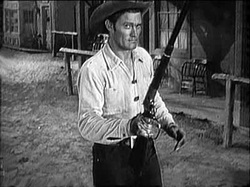 This is where I, and millions of others like me, first got exposed to stuff like Star Trek (which became the phenomenon it is today through syndication in the 70s), The Wild Wild West, Bonanza, Bewitched, Perry Mason, Voyage to the Bottom of the Sea, I Love Lucy, The Andy Griffith Show, The Twilight Zone and on and on. These shows, good, bad and indifferent, along with all the old movies my eager young mind lapped up after school and on weekends, helped to make me the inveterate film and TV nut that I am today. There were also highly-influential shows that were newly airing on the networks then. The 70s were the peak of the TV detective series. We had every kind of cop or private detective you could imagine: young hotshot buddy cops (Starsky & Hutch), rumpled genius cops (Columbo), Polish detectives (Banacek), undercover female detectives (Police Woman), cowboy detectives (McCloud), husband and wife detectives (McMillan & Wife), blind detectives (Longstreet), fat detectives (Cannon), old detectives (Barnaby Jones)...the list goes on and on. And on. (I'm not kidding.) A lot of these 70s cop shows didn't appeal to me then. They were a bit, well...adult for the 8 year-old me. I preferred the more colorful, stylish and, frankly, less gritty shows of the 60s. But recently, in my 40s, and thanks to the wonderful gift of TV on DVD sets, I've had a chance to catch up with a lot of these 70s cop shows. And you know what? I'm digging 'em. A lot. Which brings me to the other night. I had myself a little 70s cop show double feature: an episode each of Kojak and The Streets of San Francisco. Kojak was a show I have absolutely no memory of watching growing up. All I knew was that it starred Telly Savalas (the bald detective) and he was supposedly famous for sucking on lollipops and shouting "Who loves ya, baby?" Well, so far in season one, there's not a lollipop in sight. Instead, we have a deadly serious Savalas, barking orders at a team of harried NYC homicide cops in an engrossing run of gritty little crime thrillers.  Coming around the midway point in season one (from January 1974), "Death is not a Passing Grade" plays a bit like an early run-through for Law & Order: Criminal Intent. From the outset, we know who the killer is: young punk James Woods, and he's already got that smarmy slimeball act down pat. Woods plays a recently-returned Vietnam vet named Caz who is behind a series of robberies that have left the NYPD chasing its tail .  Love the yellow turtleneck, James! Love the yellow turtleneck, James! When the latest robbery goes wrong, Caz ups the ante by knifing a pawn shop owner in the back. Homicide. That's where Kojak and crew come in. Not only is Caz a wannabe criminal mastermind, he also happens to be a student of a criminology course that Kojak is teaching. Caz has got some serious Daddy issues, and he's soon playing a dangerous cat-and-mouse game with Kojak. Big mistake,Caz. Kojak enjoys much friendlier relations with another of his students, given a cute nickname, Delta (cuz she's, like, from Mississippi). Delta is played by slinky Pamela Hensley (years later a subject of many a male teenage crush as Princess Ardala in Buck Rogers in the 25th Century). Of course, Caz puts two-and-two together and like any good psycho, soon ambushes Delta in her apartment and lies in wait for a fatal appointment with Kojak...  I'm really enjoying the heck out of Kojak. Savalas has bags of charisma and, at this early stage at least, treats the role seriously. He might be a snazzier dresser than the NYPD norm, but otherwise he's all gruff, no-nonsense, hard ass cop. He enjoys an easy rapport with his frazzled, hardworking junior detectives, who don't really emerge as rounded characters in their own right but provide ample supporting color. One of the best things about KOJAK is all the nice location work. New York City is captured in all its grungy 70s glory. I love the time capsule effect of old TV shows and movies -- an era in history, preserved on film. I might have lived through it, but I was too young to be paying enough attention to remember it in any detail. Watching shows like this brings it all back to life. Of course, Kojak has a typically great theme tune (remember when shows had theme tunes? It's a lost art nowadays), which you can listen to here.  Another 70s cop show with an awesome theme tune is The Streets of San Francisco. Like Kojak, a lot of Streets was shot on all sorts of seedy Bay Area locations, and it adds a lot of welcome atmosphere. By the midpoint of the first season, veteran detective Mike Stone (played with easy authority by Karl Malden) and upstart college boy wonder Steve Keller (an impossibly young Michael Douglas) have gotten over their initially prickly relationship and now enjoy a nice, friendly camaraderie. In "The House on Hyde Street" (originally aired on March 1st, 1973) , Stone and Keller are called to investigate the disappearance of a young boy, last seen poking around in a creepy old neighborhood house.  The house is cluttered with a mix of antiques and old junk, brought back by kindly old eccentric Harlan Edgerton (stalwart character actor Lew Ayres) for his reclusive brother, a shut-in the neighbors still blame for the death of a young girl many years before. The detectives soon catch Harlan trying to bury the boy's body in Golden Gate Park. Oops. But it soon becomes apparent that the well-meaning old guy was only looking out for his shell-shocked WWII vet brother, and had nothing to do with the boy's death.  So what really happened? The only one to know the whole truth is the neighborhood young punk, Billy. Billy, by the way, is played by the instantly-recognizable Clint Howard (director Ron "Opie" Howard's baby brother). It's a simple story, with not much in the way of a mystery, but made absorbing enough by nice supporting turns by Ayres, Albert Salmi (as Billy's boorish father) and John Kerr (brooding hero of South Pacific and Roger Corman's The Pit and the Pendulum), as well as the excellent chemistry between Malden and Douglas . Both The Streets of San Francisco and Kojak rank as rock-solid, meat-and-potatoes TV programming, and come highly recommended to those who like vintage TV cop shows, loud ties and turtlenecks, cool cars and good old-fashioned macho swagger. You know who you are. Note: Kojak screen captures come from the U.K. Region 2 season one set (recommended for those with Region Free DVD players). The Streets of San Francisco snaps are from the U.S. Region 1 season one, volume 2 set, put out by CBS/Paramount. Both sets boast generally excellent picture quality. |
Talking about all sorts of television, especially the good old stuff...
Hey!!! Be sure to subscribe to the RSS feed below, to be informed of new postings! Neat-O Keen-O TV Blogs
Double O Section
From the Archive (a British Television Blog) The Classic TV History Blog (Stephen Bowie's site) The Stupendously, Amazingly Cool World of Old TV TARDIS Eridutorum Cathode Ray Tube Other Cool TV Sites
Archives
November 2015
Categories
All
|












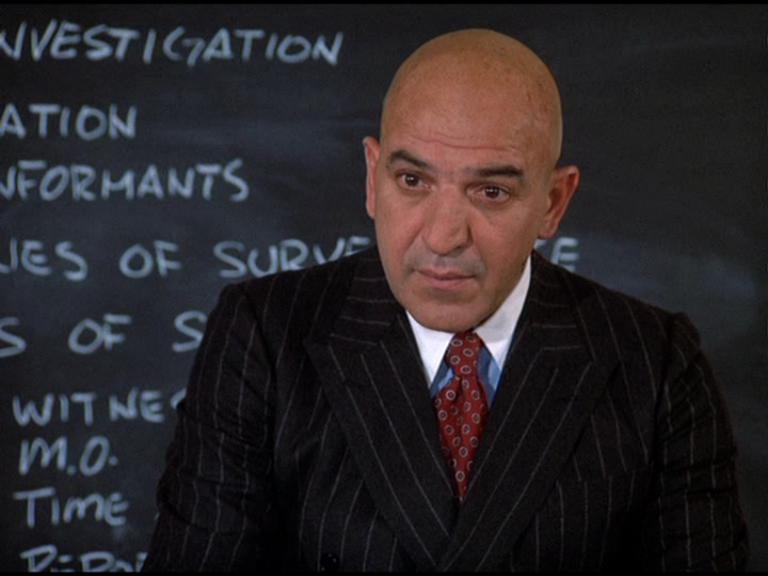



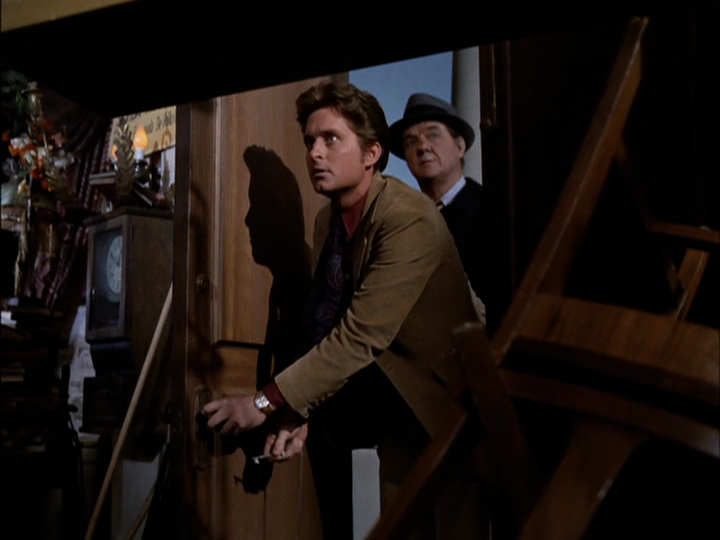




 RSS Feed
RSS Feed





